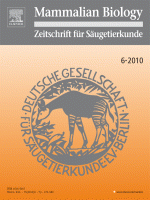top of page

Werdel Wildlife Lab
Campus
Across The Country
Recent Publications
*Werdel Wildlife Lab Member

T.J. Werdel, M. Fidino, C.W. Piper, A.M. Ricketts, M.S. Peek, and A.A. Ahlers. 2025. Influence of landscape composition on spatiotemporal interactions between sympatric canids. Ecological Applications. https://doi.org/10.1002/eap.70047 (Cover Article)

Whitman, D.* and T.J. Werdel. 2024. Occurrence of fox squirrels influenced by fine‑scale landscape characteristics on a college campus. Ecology and Evolution. https://doi.org/10.1002/ece3.70488

Werdel, T.J., D. Matarrita-Cascante, and J.E. Lucero. 2024. State of Traditional Ecological Knowledge in the wildlife management profession. The Journal of Wildlife Management. https://doi.org/10.1002/jwmg.22579

Werdel, T.J., C.W. Piper, A.M. Ricketts, M.S. Peek, and A.A. Ahlers. 2023. Direct and indirect landscape‑scale pathways structure carnivore communities in an agro‑prairie ecosystem. Journal of Mammalogy. https://doi.org/10.1093/jmammal/gyad065

Werdel, T.J., J.A. Jenks, J.T. Kanta, C.P. Lehman, and T.J. Frink. 2023. Resource selection and herbaceous biomass at foraging sites of translocated bighorn sheep. Rangeland Ecology & Management. https://doi.org/10.1016/j.rama.2022.12.004

Werdel, T.J., C.W. Piper, A.M. Ricketts, M.S. Peek, D.S. Sullins, and A.A Ahlers. 2023. Strategic grassland conservation for swift foxes in multi-use landscapes. Biological Conservation. https://doi.org/10.1016/j.biocon.2022.109864

Palomo‑Muñoz, G, T.J. Werdel, C.W. Piper, M.S. Peek, A.M. Ricketts, and A.A Ahlers. 2022. Spatiotemporal distributions of mammals occurring in an agro‑prairie ecosystem. Ecology. https://doi.org/10.1002/ecy.3945

Hessami, M.A., T.J. Werdel, S.J. Hoagland, and M.T. Kohl. 2022. Melding Past, Present, and Future: The importance of tribal management in wildlife conservation and management. Chapter 1 in C. Bishop, E. Gomez, J. Organ, and T. Ryder eds. Introduction to Wildlife Management and Conservation in North America. Great River Learning of Dubuque, IA. ISBN: 9781680755978

Werdel, T.J., C.W. Piper, A.M. Ricketts, M.S. Peek, and A.A. Ahlers. 2022. Scale-specific landscape effects impose range-limiting constraints on the distribution of a prairie-obligate carnivore. Landscape Ecology. https://doi.org/10.1007/ s10980-022-01466-0

Werdel, T.J., J.A. Jenks, J.T. Kanta, C.P. Lehman, and T.J. Frink. 2021. Space use and movement patterns of translocated bighorn sheep. Mammalian Biology. https://doi.org/10.1007/s42991-021-00107-4

Werdel, T.J., J.A. Jenks, T.E. Besser, J.T. Kanta, C.P. Lehman, and T.J. Frink. 2019. Restoration of a bighorn sheep population impeded by Mycoplasma ovipneumoniae exposure. Restoration Ecology. https://doi.org/https: //doi.org/10.1111/rec.13084 (Cover Article)

Werdel, T.J., J.A. Jenks, T.E. Besser, J.T. Kanta, C.P. Lehman, and T.J. Frink. 2018. Survival of translocated bighorn sheep in the Deadwood region of the Black Hills, South Dakota. Northwestern Naturalist 99:222-231. https://doi.org/10.1898/ NWN18-06.1
Map
Publications

bottom of page

